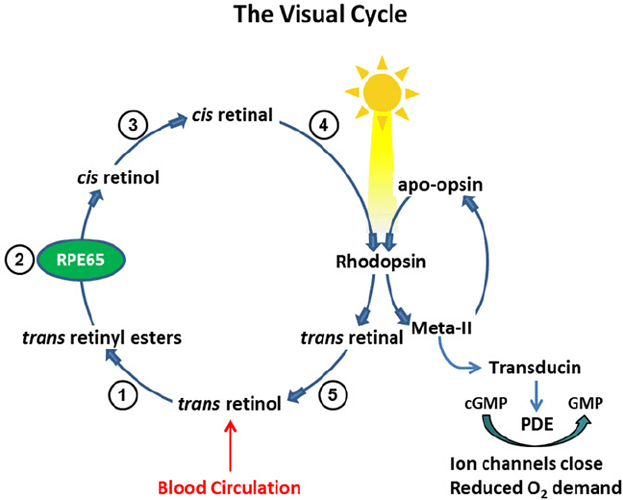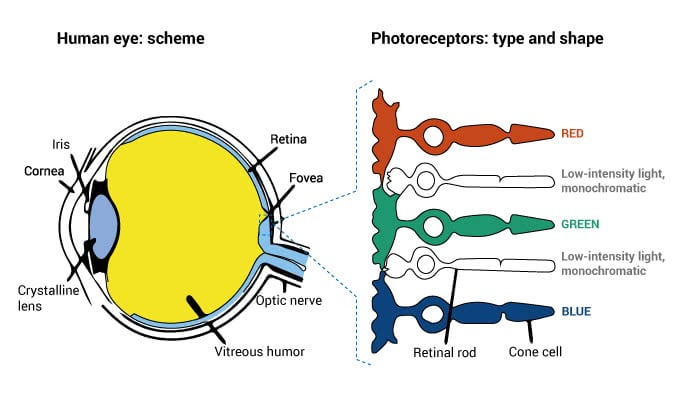VISION PHYSIOLOGY AND EYE ANATOMY
- Which physiological events take place during vision?
- Refraction of the light which enters the eye
- Focusing the image on the retina by changing the size or shape of the lens
- convergence of the image
- photochemical activity in the retina
- processing in the brain and perception
-
In physics, refraction is the change in the direction of a wave passing from one medium to another caused by the change of speed
-
Before the light reaches the retina, it must pass through the cornea
-
In a normal healthy eye, the light should fall and focus on the retina
-
In myopic eyes, the light focuses in front of the retina, while in farsightedness, it focuses behind the retina
-
Hyperopia occurs when the eyeball is too short and therefore, objects that are near are blurry
-
Depending on the amount of light and distance from the objects, accommodation of the lens help to focus the light on the retina in the right place.
-
How does the eye focus on near objects? The ciliary muscle contact, the ciliary body is pulled forward and inward. This causes the tension on the suspensory ligament of the lens to be reduced, and the lens becomes thicker and round due to its elasticity, allowing us to focus on a near object
-
Rods are responsible for vision at low light levels, and cones are active at higher light levels, responsible for color vision and high spatial acuity
-
How does the eye focus on distant objects? The ciliary muscles relax, causing the body to return to its normal resting state. The tension on the suspensory ligament of the lens increases, and the lens becomes thinner and flatter, allowing us to focus on a distant object
-
Describe the photochemical activity in rod cells and the visual cycle
- Describe the photochemical activity in cone cells
The activity in the cone cells is similar to rods, but we have three different types of cone cells - one for each photopigment - red, green, and blue (some animals have way more pigments and can see colors and light wavelength we can’t!)
- They contain iodopsin as photo-pigment, which is composed of 11 cis-retinal and photopsin
- The perception of colors depends on which cone is stimulated
- The combination of all cones eventually leads to our perception of colors
- Absence of all color produce the perception of black.
- Describe the structure of the human eye and the photoreceptors

